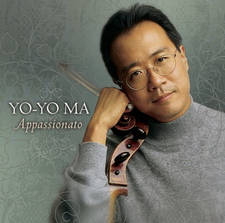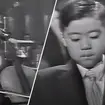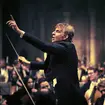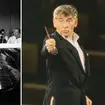When Leonard Bernstein needed only his eyebrows to conduct the Vienna Philharmonic
20 December 2023, 16:31 | Updated: 22 December 2023, 10:10
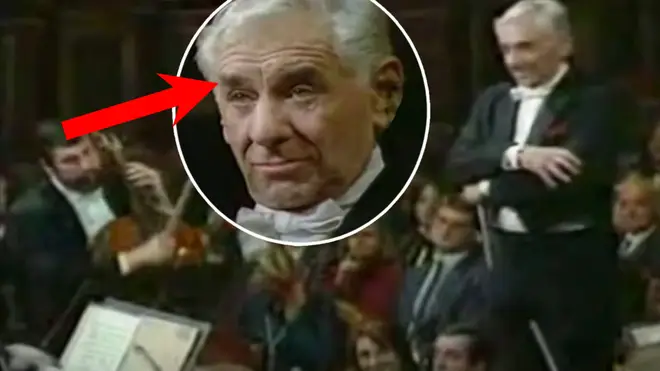
An orchestra and its conductor converse in mysterious ways…
Picture a conductor, and the image likely conjured up is one of a suited-and-booted figure at the helm of an orchestra, waving their arms around with varying degrees of intensity.
But nay, says Leonard Bernstein, tear up your rulebook of concert stereotypes!
Among the treasure trove of iconic Bernstein videos on YouTube – which Bradley Cooper said he watched religiously while preparing to direct and star in Maestro – this particular gem shows the legendary American maestro live in concert in 1984 at the Vienna Musikverein, with no need for a baton, or even his hands, to coax a great performance from the Vienna Philharmonic.
In a literal eyebrow-raising display of musicianship, Bernstein uses only his brow, alongside the odd smile and grimace, to give the orchestra all the information they need about tempo and dynamics.
As the man himself once said, “Technique is communication: the two words are synonymous in conductors.”
The wonderful string dialogue in Haydn’s Symphony No. 88 gains a whole new flavour.
Read more: Leonard Bernstein’s 10 greatest pieces of music

Look Ma No Hands! Leonard Bernstein at his best...
The Vienna Philharmonic enjoyed a close collaboration with Bernstein, as one of the most important maestros in the orchestra’s history.
Between his debut in 1966 and his death in 1990, he gave concerts every year at the great classical music capital’s Konzerthaus or Musikverein and toured with the orchestra around Europe and North America.
Read more: Leonard Bernstein relentlessly corrects José Carreras in tense recording session
It was an unbreakable music-making relationship – one that even survived an earthquake, that shook Vienna in 1972 during a Sunday morning performance of Mahler’s Fifth Symphony. Bernstein was apparently so lost in the music that he didn’t stop conducting, even as the audience ran for the exits.
In 1982, the Philharmonic awarded the maestro with its Ehrenring, a ring of honour symbolising their marriage – one of playfulness but deep respect, founded on a shared devotion to great music-making.
